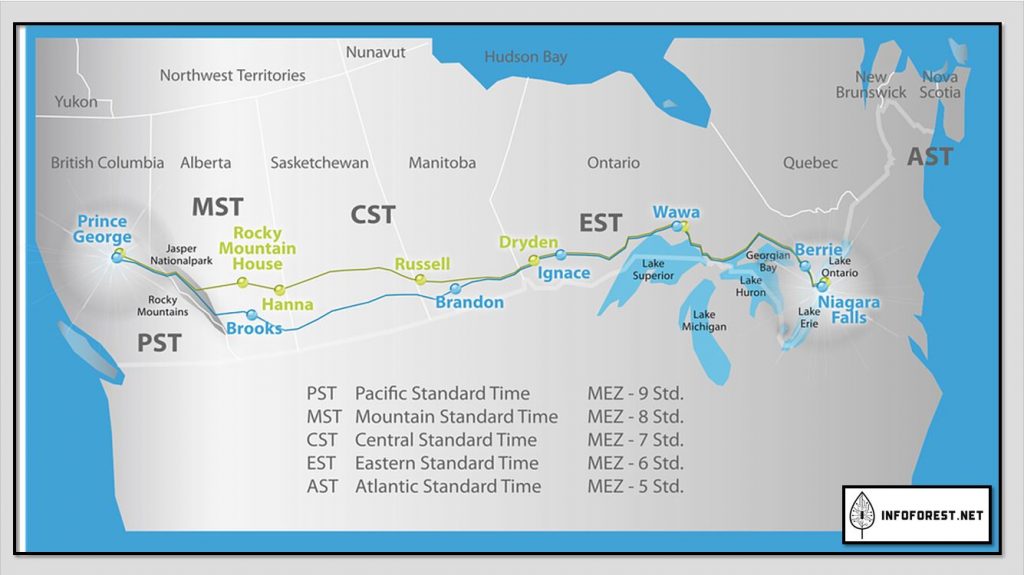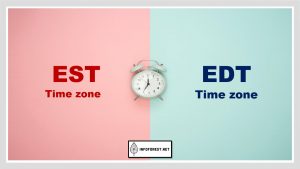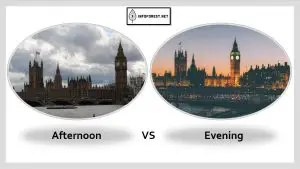
Time zones are geographic regions where the same standard time is used. They are divided based on the number of hours they are offset from Coordinated Universal Time (UTC), which is a standardized time that is used as a reference for setting the time in other time zones. in this article, we introduce all Differences Between Eastern Time Zone and Central Time Zone with a comparison chart and a lot of examples.
The United States and Canada are divided into six time zones, with each time zone being offset by one hour from its neighbors. The time zones in the United States and Canada are:
- Eastern Time (ET)
- Central Time (CT)
- Mountain Time (MT)
- Pacific Time (PT)
- Alaska Time (AKT)
- Hawaii-Aleutian Time (HAT)
The Eastern Time Zone (ET) is the time zone that is used in the Eastern part of the United States and Canada. It is one hour ahead of the Central Time Zone (CT). The Central Time Zone (CT) is used in the central part of the United States and Canada. It is one hour behind the Eastern Time Zone and one hour ahead of the Mountain Time Zone (MT).

Eastern Time Zone vs Central Time Zone
The Eastern Time Zone (ET) is a time zone in the Eastern part of the United States and Canada. It is one hour ahead of the Central Time Zone (CT). When it is noon in the Eastern Time Zone, it is 11:00 am in the Central Time Zone.
The Eastern Time Zone includes the states of Connecticut, Delaware, Florida, Georgia, Indiana (most of it), Kentucky (eastern parts), Maine, Maryland, Massachusetts, Michigan (most of the Lower Peninsula), New Hampshire, New Jersey, New York, North Carolina, Ohio (most of it), Pennsylvania, Rhode Island, South Carolina, Tennessee (eastern parts), Vermont, Virginia, West Virginia, and the District of Columbia.
The Central Time Zone includes the states of Alabama, Arkansas, Illinois, Iowa, Kansas, Louisiana, Minnesota, Mississippi, Missouri, Oklahoma, and Texas. It also includes the provinces of Manitoba, Ontario, and Quebec in Canada.
Most Viewed Articles
Comparison Table
Here is a table showing the time zones in the United States and Canada, their abbreviations, and the UTC offset (the number of hours they are offset from Coordinated Universal Time (UTC)):
| Time Zone | Abbreviation | UTC Offset |
|---|---|---|
| Eastern Time | ET | -5 hours |
| Central Time | CT | -6 hours |
| Mountain Time | MT | -7 hours |
| Pacific Time | PT | -8 hours |
| Alaska Time | AKT | -9 hours |
| Hawaii-Aleutian Time | HAT | -10 hours |

10 Examples of Differences Between Eastern Time Zone and Central Time Zone
- The Eastern Time Zone (ET) includes the states of Connecticut, Delaware, Florida, Georgia, Indiana (most of it), Kentucky (eastern parts), Maine, Maryland, Massachusetts, Michigan (most of the Lower Peninsula), New Hampshire, New Jersey, New York, North Carolina, Ohio (most of it), Pennsylvania, Rhode Island, South Carolina, Tennessee (eastern parts), Vermont, Virginia, West Virginia, and the District of Columbia.
- The Central Time Zone (CT) includes the states of Alabama, Arkansas, Illinois, Iowa, Kansas, Louisiana, Minnesota, Mississippi, Missouri, Oklahoma, and Texas. It also includes the provinces of Manitoba, Ontario, and Quebec in Canada.
- When it is noon in the Eastern Time Zone, it is 11:00 am in the Central Time Zone.
- The Mountain Time Zone (MT) includes the states of Arizona (except for the Mohave County), Colorado, Idaho (except for the Benewah, Bonner, Boundary, Kootenai, and Shoshone counties), Montana, Nevada (except for the West Wendover), New Mexico (except for the state’s Bootheel), Utah, Wyoming, and the states of Texas (El Paso County only), Oklahoma (Cimarron County only), and Kansas (Sherman County only).
- The Pacific Time Zone (PT) includes the states of California, Oregon, and Washington, as well as the western parts of Nevada and Idaho.
- The Alaska Time Zone (AKT) includes the state of Alaska.
- The Hawaii-Aleutian Time Zone (HAT) includes the state of Hawaii and the Aleutian Islands of Alaska.
- The UTC offset for the Eastern Time Zone is -5 hours.
- The UTC offset for the Central Time Zone is -6 hours.
- The UTC offset for the Mountain Time Zone is -7 hours.
Conclusion
Time zones are used to synchronize the time in different parts of the world. They are divided based on the number of hours they are offset from Coordinated Universal Time (UTC), which is a standardized time that is used as a reference for setting the time in other time zones. The United States and Canada are divided into six time zones, each with its own abbreviation and UTC offset. Understanding time zones is important for coordinating events and communication between people in different parts of the world.
We also invite you not to miss our other popular articles such as:
Difference Between Evening and Afternoon
How to lose weight fast, How Many Ounces in a Gallon
, and How To Delete Instagram Account.






